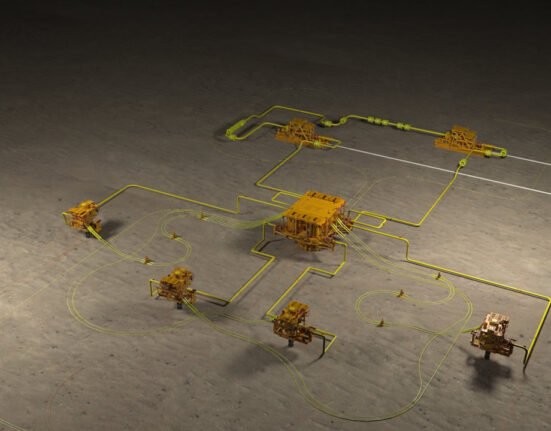The global engineering workforce shortage is one of the most pressing challenges facing the construction and innovation sectors today. With rapid urbanization, technological advancements, and the increasing demand for sustainable infrastructure, the shortage of skilled engineers is threatening to slow down progress across multiple industries. As nations strive to meet the growing demand for new infrastructure and technological solutions, the lack of engineers with the required expertise could have far-reaching consequences on the pace of development, economic growth, and global competitiveness.
In this article, we will delve into the causes of the engineering workforce shortage, explore its impacts on both construction and innovation, and discuss the strategies that can be implemented to address the crisis. Through this exploration, we will gain a deeper understanding of why this issue is so critical and how various stakeholders—governments, educational institutions, and industries—can come together to build a sustainable and future-ready engineering workforce.
The demand for engineers across all disciplines—civil, mechanical, electrical, chemical, software, and environmental—has never been higher. With increasing urbanization, global infrastructure projects are becoming more complex and ambitious. From megacities rising in Asia and Africa to the modernizing infrastructure in developed nations, engineers are at the heart of nearly every construction and technological innovation project. From building bridges, dams, and airports to designing smart cities and renewable energy solutions, engineers are required to deliver innovative, safe, and cost-effective solutions.
Moreover, industries such as robotics, AI, and biotechnology are at the forefront of modern innovation, and they too require highly specialized engineering talent. Emerging technologies such as 3D printing, autonomous vehicles, and energy-efficient solutions to combat climate change need engineering expertise for their design, development, and integration. However, despite the growing demand, there is a significant gap between the demand for skilled engineers and the number of graduates entering the workforce.
The shortage of engineers is driven by a combination of factors that have developed over several decades. One of the primary causes is the aging engineering workforce. In many developed countries, the majority of engineers are approaching retirement age. With fewer younger professionals entering the field, there is a noticeable gap in the workforce.
The decline in interest in STEM (Science, Technology, Engineering, and Mathematics) subjects among younger generations has also contributed to this problem. Many students are opting for careers in fields they perceive to be more lucrative or less demanding than engineering. Additionally, engineering disciplines require long years of education and training, which can be a deterrent for students who are looking for quicker paths to employment.
Another factor exacerbating the shortage is the evolving nature of engineering itself. Rapid technological advancements require engineers to not only possess traditional skills but also stay updated with the latest developments. Engineers now need expertise in areas like artificial intelligence, machine learning, renewable energy, and automation. This requires constant learning and upskilling, which many universities and educational institutions are struggling to keep up with. As the pace of change accelerates, the gap between the skills engineers possess and the skills needed in the workforce continues to widen.
Moreover, the global competition for talent is making the situation worse. Skilled engineers are in high demand across all sectors, and many countries and corporations are offering attractive salaries and benefits to lure them. This competition often results in the brain drain phenomenon, where engineers from developing countries migrate to more developed regions in search of better opportunities. This further exacerbates the shortage in regions that are most in need of engineering talent.
The shortage of engineers is having a profound effect on the construction industry, which relies on highly skilled professionals for project planning, design, and execution. Without enough engineers, construction timelines are being delayed, project costs are rising, and the quality of the finished product may suffer.
One of the immediate effects of the engineering shortage is the slowdown in the completion of infrastructure projects. Large-scale construction projects such as highways, bridges, power plants, and airports require meticulous planning, expert engineering design, and management. When the necessary engineering talent is unavailable, projects get delayed, resulting in increased construction costs, disrupted schedules, and a lack of resources to address unforeseen issues.
The workforce shortage also results in a higher demand for temporary solutions and shortcuts, which can compromise safety and quality. When projects are rushed to meet deadlines, corners are sometimes cut, leading to structural flaws, poor workmanship, and, in some cases, catastrophic failures. The consequence of poor engineering practices can be disastrous, particularly in industries like construction where safety is paramount.
Moreover, the engineering shortage leads to a loss of global competitiveness. For countries or regions with fewer engineers, there is a reduced capacity to take on large infrastructure projects. The competitive edge that nations once held in terms of building world-class infrastructure diminishes, impacting their economic development and standing in the global marketplace.
Innovation relies heavily on engineering talent to bring ideas to life. Industries that drive technological advancement—such as renewable energy, AI, robotics, and biotechnology—need engineers to develop, test, and scale their solutions. Without sufficient engineering talent, progress in these fields will slow down, ultimately hindering efforts to solve some of the world’s most pressing challenges.
For example, the shift towards renewable energy requires engineers to design energy-efficient systems and infrastructures that can replace fossil fuels. Wind turbines, solar panels, energy storage systems, and electric vehicles all require a team of engineers with diverse skills. The energy sector’s transition to cleaner energy sources will not occur as quickly as needed if engineers aren’t available to design, test, and implement these solutions.
In industries such as AI, robotics, and automation, engineers are needed to build and deploy cutting-edge technologies that can revolutionize everything from manufacturing to healthcare. Automation has the potential to improve efficiency, reduce human error, and increase productivity across a wide range of industries. However, without enough engineers to develop and refine these technologies, the full benefits of automation may not be realized.
Additionally, the shortage of engineers is particularly felt in the field of digital transformation. As more industries adopt digital solutions and transition to data-driven processes, the need for engineers skilled in data analytics, cybersecurity, and cloud computing grows. The ability to safeguard data, create scalable solutions, and maintain high-performing systems is crucial to the success of any organization. Without engineers to meet these demands, the digital economy could face significant barriers.
To address the engineering workforce shortage, concerted efforts must be made across multiple levels. Educational institutions need to place greater emphasis on STEM education and make the engineering field more appealing to young people. Encouragingly, there has been a significant push in recent years to introduce engineering concepts at earlier educational stages. Offering hands-on, real-world engineering experiences in schools, supporting engineering camps and competitions, and fostering mentorship opportunities can help increase interest in the field.
Moreover, universities must evolve their curricula to meet the changing needs of the industry. Schools should incorporate emerging technologies into their programs, including AI, robotics, and green technologies. Industry-academic partnerships can ensure that students graduate with the skills necessary to thrive in a competitive job market.
The private sector must also play a role by investing in workforce development. This can involve offering internships, on-the-job training, and career development programs that give new engineers the opportunity to grow and advance within their companies. Companies can also offer competitive compensation packages, including flexible work schedules, professional development opportunities, and career progression pathways, to help attract and retain talent.
Governments must implement policies that support the recruitment and retention of engineers. This may include incentives like scholarships, tax credits, or subsidies for students pursuing engineering degrees. Governments can also help by promoting engineering careers through public campaigns that highlight the societal benefits of the profession and its potential to solve global challenges.
The global engineering workforce shortage presents a significant challenge to both the construction industry and technological innovation. As demand for engineers continues to outpace supply, the construction industry is facing delays, rising costs, and quality concerns. Similarly, technological advancements in sectors like renewable energy, automation, and AI may be slowed due to the lack of skilled engineers. However, with a comprehensive approach that involves educational reforms, industry support, and government action, it is possible to address the workforce shortage and ensure that the engineering sector remains a catalyst for progress.
Are you an engineer looking to make a meaningful impact? Stay connected with epci.ng to stay updated on the latest developments in engineering, construction, and technology. Share your expertise, connect with other professionals, and be part of the movement to solve the engineering workforce shortage. Join us today and contribute to a better, more sustainable future.
Get the latest updates on Energy, Construction, Engineering, and Cryptocurrency. Join us on WhatsApp or Telegram for real-time news. Have a report or article? Send it to report@epci.ng. Follow us on X (Twitter), Instagram, LinkedIn, and Facebook for more industry insights.







Leave feedback about this